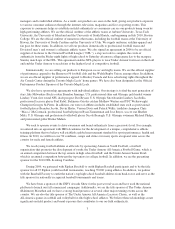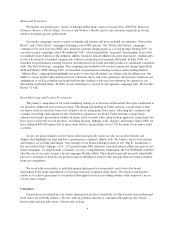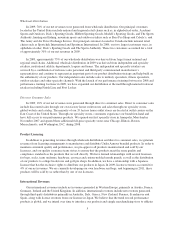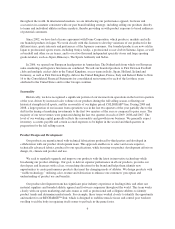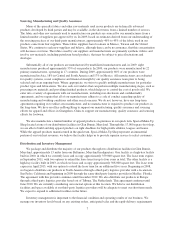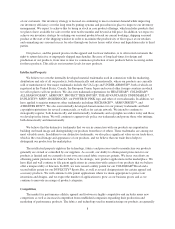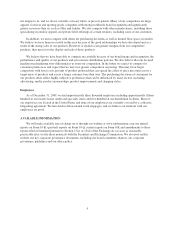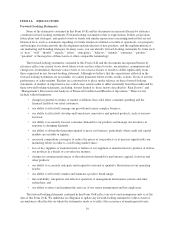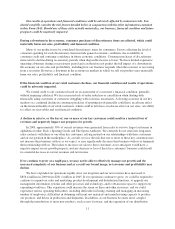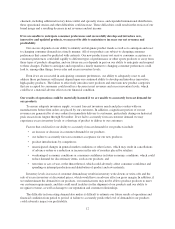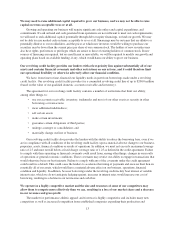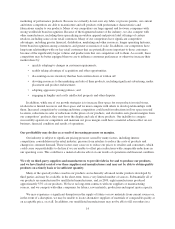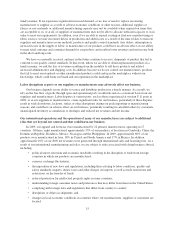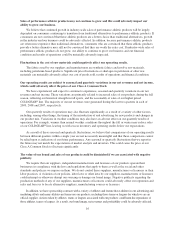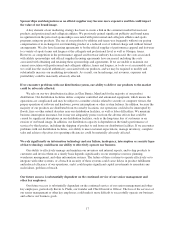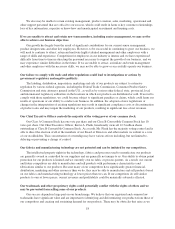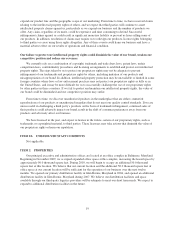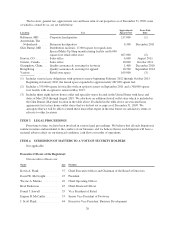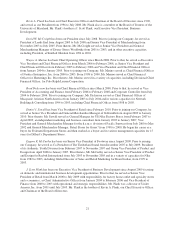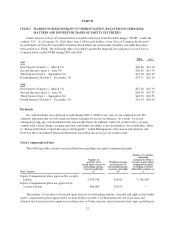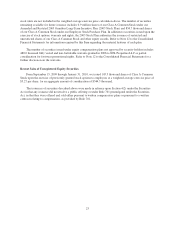Under Armour 2009 Annual Report Download - page 21
Download and view the complete annual report
Please find page 21 of the 2009 Under Armour annual report below. You can navigate through the pages in the report by either clicking on the pages listed below, or by using the keyword search tool below to find specific information within the annual report.We may need to raise additional capital required to grow our business, and we may not be able to raise
capital on terms acceptable to us or at all.
Growing and operating our business will require significant cash outlays and capital expenditures and
commitments. If cash on hand and cash generated from operations are not sufficient to meet our cash requirements,
we will need to seek additional capital, potentially through debt or equity financings, to fund our growth. We may
not be able to raise needed cash on terms acceptable to us or at all. Financings may be on terms that are dilutive or
potentially dilutive to our stockholders, and the prices at which new investors would be willing to purchase our
securities may be lower than the current price per share of our common stock. The holders of new securities may
also have rights, preferences or privileges which are senior to those of existing holders of common stock. If new
sources of financing are required, but are insufficient or unavailable, we will be required to modify our growth and
operating plans based on available funding, if any, which would harm our ability to grow our business.
Our revolving credit facility provides our lenders with a first-priority lien against substantially all of our
assets and contains financial covenants and other restrictions on our actions, and it could therefore limit
our operational flexibility or otherwise adversely affect our financial condition.
We have, from time to time, financed our liquidity needs in part from borrowings made under a revolving
credit facility. Our revolving credit facility provides for a committed revolving credit line of up to $200.0 million
(based on the value of our qualified domestic accounts receivable and inventory).
The agreement for our revolving credit facility contains a number of restrictions that limit our ability,
among other things, to:
• use our accounts receivable, inventory, trademarks and most of our other assets as security in other
borrowings or transactions;
• incur additional indebtedness;
• sell certain assets;
• make certain investments;
• guarantee certain obligations of third parties;
• undergo a merger or consolidation; and
• materially change our line of business.
Our revolving credit facility also provides the lenders with the ability to reduce the borrowing base, even if we
are in compliance with all conditions of the revolving credit facility, upon a material adverse change to our business,
properties, assets, financial condition or results of operations. In addition, we must not exceed a maximum leverage
ratio of 2.5 and must not fall below a fixed charge coverage ratio of 1.25 as defined in the credit agreement. Failure
to comply with these operating or financial covenants could result from, among other things, changes in our results
of operations or general economic conditions. These covenants may restrict our ability to engage in transactions that
would otherwise be in our best interests. Failure to comply with any of the covenants under the credit agreement
could result in a default. This could cause the lenders to accelerate the timing of payments and exercise their lien on
essentially all of our assets, which would have a material adverse effect on our business, operations, financial
condition and liquidity. In addition, because borrowings under the revolving credit facility bear interest at variable
interest rates, which we do not anticipate hedging against, increases in interest rates would increase our cost of
borrowing, resulting in a decline in our net income and cash flow.
We operate in a highly competitive market and the size and resources of some of our competitors may
allow them to compete more effectively than we can, resulting in a loss of our market share and a decrease
in our revenues and gross profit.
The market for performance athletic apparel and footwear is highly competitive and includes many new
competitors as well as increased competition from established companies expanding their production and
13


